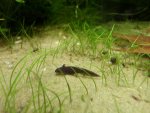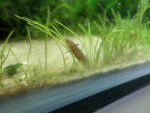- Joined
- May 8, 2013
- Messages
- 2,685
- Reaction score
- 89
- Points
- 48
- Location
- Chesterfield, England
- Country
- England
Today I noticed this jet black larvae in the pyrrho tank. I've never seen one anything like it in the past, they've all been the usual dirty brown colour, like the one in the last picture, sometimes lighter, but never darker. I wonder if it's melanoid, although I don't suppose I'll know one way or the other being as though they all turn black soon after morphing. Just thought it was interesting...




